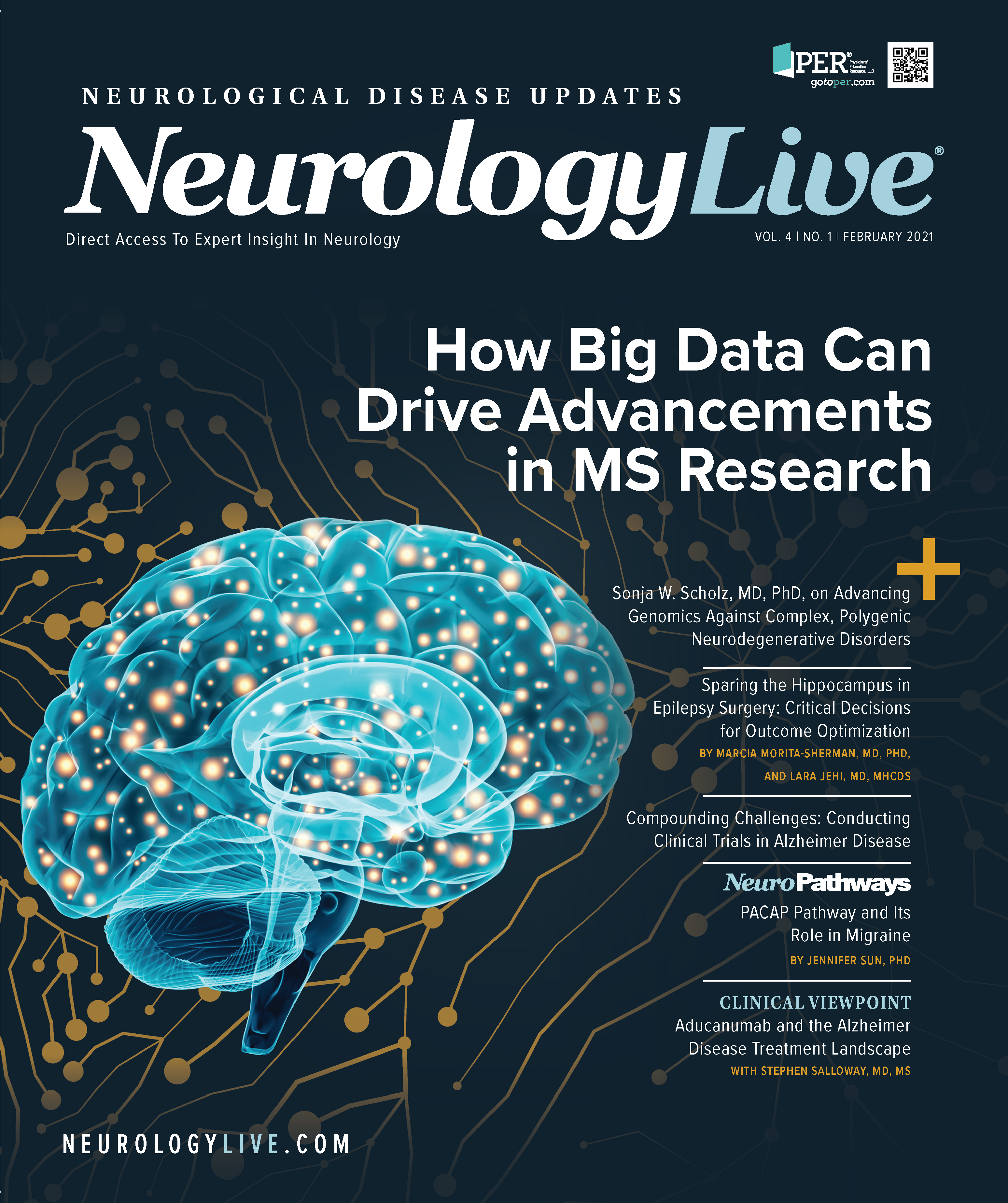Publication
Article
NeurologyLive
Aducanumab and the Alzheimer Disease Treatment Landscape
Author(s):
The director of Neurology and the Memory and Aging Program at Butler Hospital and principal investigator in the aducanumab clinical trial program discussed the investigational agent and the current landscape of care.
Stephen Salloway, MD, MS

The global pandemic brought with it an enormous challenge for health care workers. But for the Alzheimer disease (AD) community, the past several months also brought the ongoing conversations around aducanumab, Biogen’s investigational amyloid-targeting agent, to the forefront. After its 2 phase 3 trials were cut short and a complex analysis suggested the therapy may offer benefit to patients, the therapy is awaiting an approval decision from the FDA—potentially a landmark moment for AD—a decision the agency recently delayed 3 months out to June 2021.
While the discussion about aducanumab’s potential has dominated conversations in the space of late, determining if this agent offers benefit is far from the community’s only challenge. To find out more about what a possible approval might mean for AD and for the physicians treating it, as well as what impact it may have on some of those obstacles, NeurologyLive® spoke with the principal investigator in the aducanumab trials, Stephen Salloway, MD, MS, director of neurology and of the Memory and Aging Program, Butler Hospital, Providence, Rhode Island.
Q: What impact do you believe an approval of aducanumab would have for AD?
My take is that it would open a new modern treatment era for AD. It would just be the beginning—a stepping stone, rather than the final breakthrough. There was a really good quote the other day, from a colleague of mine, who said, “In order to get the best-in-class drug, we must have the first-in-class drug.” That’s how I see this.
It’s akin to azidothymidine (AZT) for HIV. There was no treatment for HIV, and when AZT was approved, it had limited use, but it stimulated the community to really get going with developing better treatments, and now they have developed really potent treatments that affect the disease course for HIV. I’m hoping the same thing would happen for us, and AD. No drug has been approved for 17 years for AD. The need is much greater now than it was back then, and this would be the first indication for mild cognitive impairment. There is no current indication for the earlier stage of the disease. And it’d be the first drug that actually targets the core pathology of the disease. There are a lot of great things on that side.
But where I see it as really being beneficial and moving the field is that it would then require us to use modern tools. We’d have to screen for amyloid status. Right now, we’d be using amyloid PET and cerebrospinal fluid, but soon we’ll have blood tests to do the same thing. That will get us on the move to figure out how to use those. We’ll have to screen for appropriate eligibility, making sure people meet the disease stage, making sure their MRI is doesn’t show extensive cerebral amyloid angiopathy. We’d have to learn how to monitor for and manage amyloid-related imaging abnormalities, which is a common adverse effect of AD therapies. On all those fronts, it would be a major advance in moving us forward.
If aducanumab became the standard of care, we’d have to [work on] add-on studies for people with early AD who had access to aducanumab. I imagine most [people] would want to go on aducanumab, rather than go into a clinical trial and [possibly] be on placebo. We’d have to show added benefit of a new treatment— or really, a combination treatment—with aducanumab plus something else, or aducanumab compared with something else.
Q: Do you think that that would happen relatively quickly if aducanumab is ultimately approved?
Well, I think it’ll be determined based on the uptake. If there is full FDA approval for the indication that we used to test the drug— which I would recommend that it be—that would be the label, and [then there would be widespread] reimbursement. Then I think there would be pretty broad uptake. Patients would have access to it, there’ll be a high demand for it, and then there will be pretty brisk uptake. We’ll figure out how to administer it to a larger number of people. That’s going to be a challenge, but I think we can overcome that. Once that happens, then that that basically establishes it as the standard of care.
Then you have an ethical problem, or [at least] a recruitment problem—you can debate whether it’s an ethical problem. If someone has access to a drug with some positive chance of benefit vs nothing, they’re going to choose [the drug], especially for a serious disease like AD. It’s a big commitment to be in these studies. You don’t want to dedicate yourself to something and turn down a treatment that might be of benefit to you. I think that will happen over the course of a year. It’ll take time to retool our trials to factor in aducanumab. Then, there is the whole issue of coverage—who pays for that? If we’re testing, let’s say, a tau drug plus aducanumab, and everyone is guaranteed to get aducanumab—some will get tau and some will get placebo—who pays for the aducanumab? Is it the sponsor of the tau trial? Is it Medicare? A combination? I don’t know. That’s another factor.
What’s likely to happen, or could, is approval of aducanumab in the United States, but no approval for a while outside the United States. Then, the trials of monotherapy, without aducanumab, would be conducted in other countries, which is good and bad. The rigor of US trials is pretty reliable, and I get [more] nervous the less developed the country is. [For instance,] we had a positive drug, Dimebon, many years ago, when it was tested in Russia, with a really great result. Then, when we tested it outside of Russia, we saw no benefit. We couldn’t replicate the findings. So, it just makes me nervous if we rely [on other medical systems], especially less developed medical systems, to prove the benefit of the drug.
Q: Do you think that the scales that are currently being used are adequate?
We always want the most sensitive and reliable measures we can develop, for sure. That’s especially challenging when we go earlier in the disease. Let’s say someone is showing pathological changes of AD with amyloid or tau buildup and no symptoms. Detecting change on a cognitive scale, in that case, is very challenging. The more impaired the patient, the easier it is to detect the change. And patients change more during the trials. That’s a very important factor: the rate of change. If you get a lot of people in a trial who are stable, then it’s very hard to show a drug’s benefit. You need at least a substantial group of people who are progressing in a detectable way during the trial.
We’ve made a lot of advances that I’m really excited about. One is that we can visualize the amyloid plaques safely now, and [do so] early on in the disease process. We can see the tau tangles, as well, with a brain scan. The blood tests and the plasma test [to detect plaques] look really good and they are coming on quickly—much more quickly than almost all of us expected. [Those tests will] be a real game-changer. Once we have a plasma test that’s reliable for detecting the disease state, and also helping to measure progression of change, that will be really helpful. [We’ll be able to] define a population that is amyloid positive, and we can target whatever stage of the disease—either preclinical, or early AD, or later AD— and verify that they have AD pathology. That’s really good.
Now we have drugs [in development] like aducanumab and others—it’s not alone—that actually target the plaques and can lower them demonstrably. That’s a big advance; don’t take that for granted. The FDA’s question is whether we can show a correlation between the lowering of the amyloid plaques and a clinical benefit, and that’s where there’s a debate. Aducanumab has had mixed results, but [there are some explanations]. First of all, the trials got interrupted. That made data interpretation more challenging. And then there was a dose adjustment for a large segment of the population—the APOE4 carriers—midway through. Dose is important for these drugs, and a lot of [the trial participants] didn’t get to the highest dose and have full exposure to that, which makes interpretation difficult. One study clearly showed a benefit, and one study didn’t. I think it’s open to interpretation.
Q: How would you describe the impact of the technological and diagnostic advances you alluded to earlier?
We have made major, major advances on the diagnostic side and biomarker side. I would consider the blood biomarker to be a major, game-changing breakthrough. Once that comes into clinic—it’s already coming into research—and we start using it for research, to screen, that will be the first major test for this. If we can reliably use that to screen, especially for the preclinical population—so we don’t have to do a PET scan on everybody to figure out who’s likely to be positive—that will be huge. At least initially, we’ll use PET scans to verify [status]. But if [the biomarker is] good enough, you won’t even need the PET scan unless you want to measure the change in amyloid-PET. That would be our first clinical use, in a research setting. If that’s good and reliable, then it’ll go into clinical practice, and then we’re in a whole new world. Then, any doctor who treats older patients will need to become familiar with it because they’ll need to know how to use it. That will be driven by therapy, if we have one. A doctor is going to be motivated if there’s something they can do. If there’s nothing you can do about, [say], prostate cancer, there’s much less motivation to screen. But now there are a lot of treatments for prostate cancer, colon cancer, breast cancer—all of the other cancers that have routine [screening] now. It will be the same thing for AD. That’s why it’s important to have at least 1 drug approved, because that will motivate the clinical community to get more engaged.





